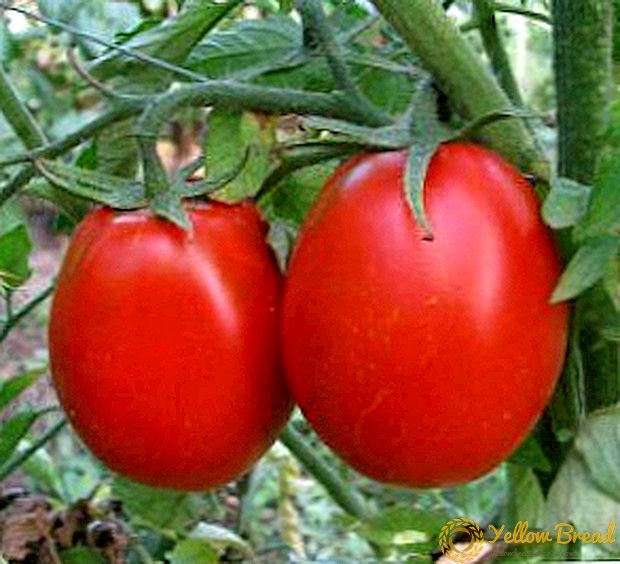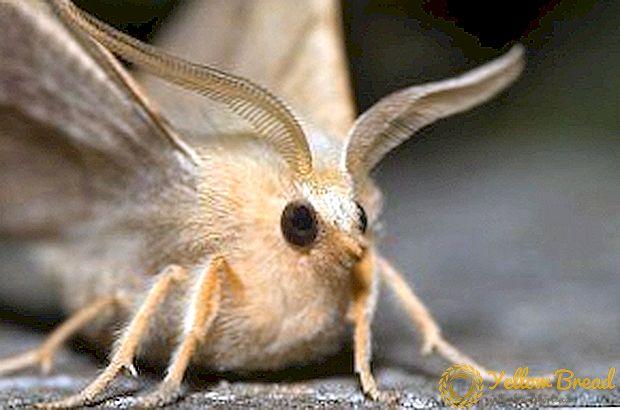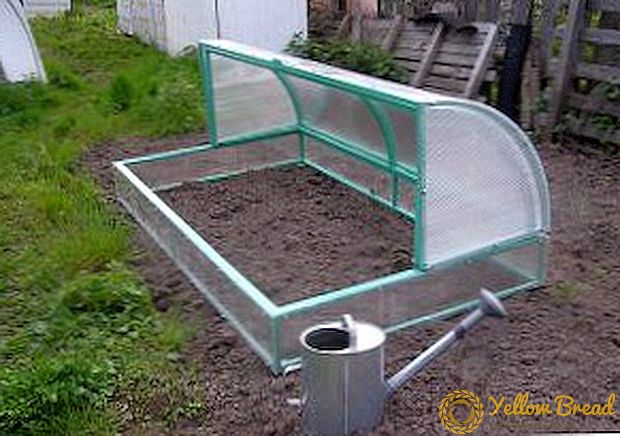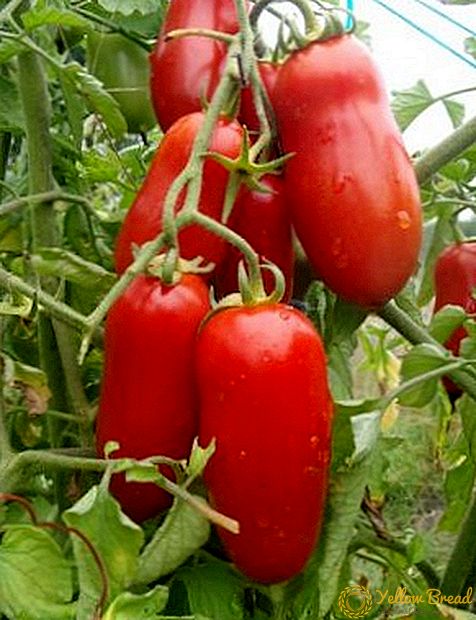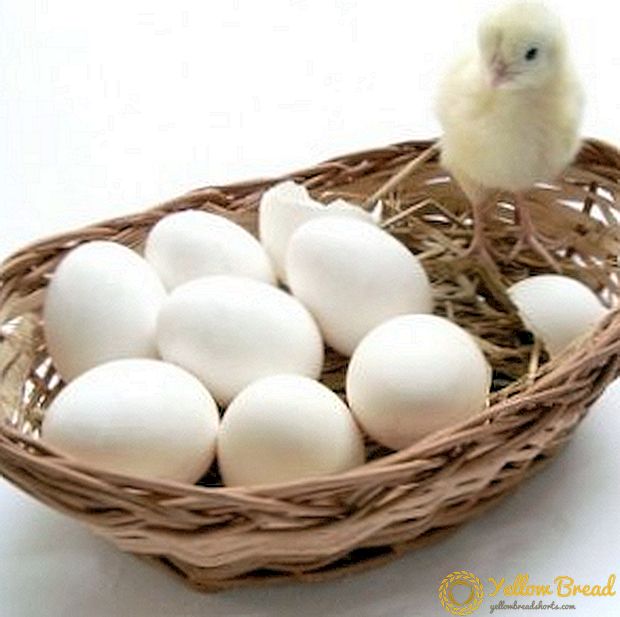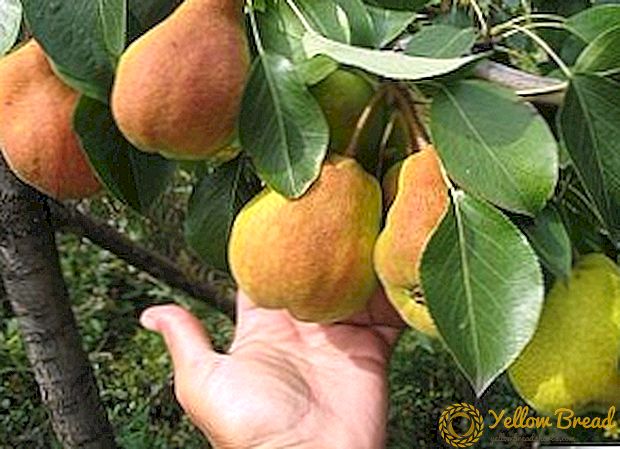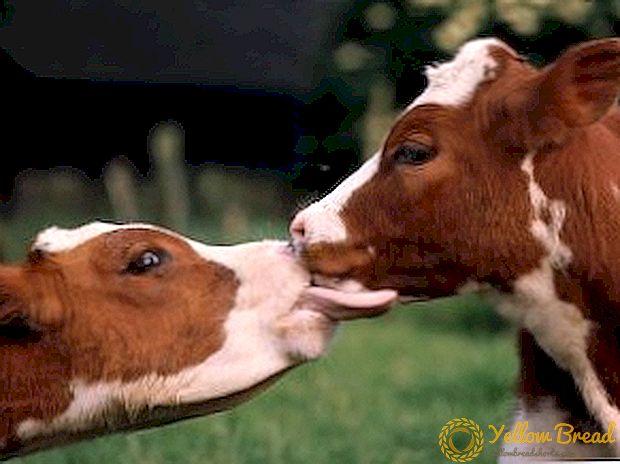
Representatives of cattle have been domesticated for quite some time.
In many village courtyards you can see a few cows, who are very loved by their owners.
To date, more than 1200 cattle breeds have been registered in the world, but among them there is a differentiation into dairy, meat and dairy, and meat animals.
For many years, the cows of many common breeds managed to get rid of a number of shortcomings.
Therefore, it is these rocks, and all three areas, are now the most famous.
Consider them closer.
- Breed "Kazakh white-headed"
- Breed "Hereford"
- Breed "Bestuzhevskaya"
- Breed "Simmental"
- Breed "Auliekol"
- Breed "Red Steppe"
- Breed "Brown Schwyzka"
Breed "Kazakh white-headed"

This breed of cows has existed since the beginning of the 20th century. It was bred by livestock breeders from Kazakhstan by mating the Hereford bulls with local cows.
It is thanks to the qualities of "parents" Kazakh white-headed cows. extremely hardy and fully justify their name for beef cow.
Since this is beef cattle, then the constitution of animals is appropriate.The main color of this breed is red, then parts of the body such as legs, brush of tail, head, belly, and dewlap are white.
The body of cows and bulls of this breed has a barrel-shaped form, the fenders are very dense and strongly protrude.
Muscles are developed perfectly, strong bones. Legs are short, but powerful. The skin is elastic in structure, subcutaneous tissue is well developed. In the summer, the wool of these cows becomes short, glitters in the sun, and smooth to the touch.
In winter, the scalp thickens, hairs become longer, sometimes curly.

Cows can gain quite a lot of weight in 540 - 580 kg, but sometimes live weight can reach 800 kg.
Bulls can gain no more than 950 kg. Dairy performance is relatively good. In a year, one cow can produce from 1000 to 1500 kg of milk with fat content of almost 4%.
Kazakh white-headed cattle are very fertile (90-96%). If it is very good to fatten a bull, then the percentage of meat from its total mass will be 60-65%.
This breed of cows unpretentious to food, quickly adapt to temperature changes, and also at an accelerated pace gaining weight.
If young animals are intensively fattened, then at the age of 15-18 months they will reach 450-470 kg in weight.
The skin of the cows of these animals is actively used in the relevant industry to obtain high quality leather. Due to insufficient development of muscles, the meat of cows of this breed is of medium fat content, but very juicy.
Breed "Hereford"

This breed is considered to be the most popular type of livestock that is raised for meat. The dark red color of these cows is basic, but some parts of the body have a white color.
These cows are folded in accordance with their meat purpose. The shape of the body in these cows is barrel-shaped, in itself it is quite large, looks slightly lowered.
Fench pronounced quite brightly. The back is wide, short length. The chest is deep and voluminous. The horns are short but thickened. There is a pile on the skin. The skin itself is thin and elastic.
The weight of an adult bull can be from 850 kg to 1 ton, and cows from 550 to 650 kg.
Hereford cattle are often recommended to go for a walk. Also they gaining weight very quickly. The meat is really "marble", of high quality. About 60% of the cow's weight is meat.

The cattle of this breed is very hardy, It does not require special care, is immune to most diseases of cattle, and also quickly adapts to a new habitat or climatic conditions.
These cows are long-lived, as they can live from 15 to 18 years, and the fecundity throughout life is kept at about the same level.
Character they are very calm, they cannot hit a person. When breeding Hereford cattle, a sufficiently large amount of money can be saved on feed, since these animals can eat any plant material on the field, that is, even weeds and the most hard grass.
Since it is a beef cattle, cows of this breed cannot be harvested, but during lactation a cow can produce 1000 - 1200 kg of milk with a fat content of 4%.
Breed "Bestuzhevskaya"

This breed of cattle was bred a very long time - in the middle of the 18th century. Purpose these animals have a universal, that is meat and dairy.
The main suit is red, but variations can be different. Sometimes there are cows with cherry skin tone. Some parts of the body may have a white color.
In these animals, everything combines very harmoniously - and well-developed muscles,and physique in general. The body of these cows is compact, but voluminous.
The head is small, the neck is slightly short, the back forms a straight line. The legs are short, they create sufficient support due to the placement method. Sometimes you can see individuals whose hind legs are saber-shaped, which makes these animals vulnerable.
The skin is soft, elastic. The udder is round or cup-shaped, the lobes are well expressed, and the total volume of the udder is large enough. Nipples are placed correctly.
As for weight, bulls can gain up to 1 ton of body weight, and cows do not weigh much, an average of 500 - 530 kg.
Milk, these cows give a lot, an average of 3000 - 5000 kg per year with fat content up to 4%. When slaughter 60% of the weight falls on meat.
Bestuzhev cows have excellent endurance, do not require special careIn winter, they can be fed with roughage, they are not affected by the list of diseases. Resistance to leukemia and tuberculosis is hereditary.
Breed "Simmental"

Simmental cattle are bred in order to receive both meat and milk. The homeland of these animals is Switzerland.
The main part of the Simmental breeds are fawn or pale-mottled color, but there are also individuals of red or red-motley shades and a white head. If the animal is purebred, the nose, hooves and horns will be either white or pink.
The body of these cows is folded firmly and proportionately. The head is large, seemingly coarse, forehead wide. The chest is deep, the bones are strong, and the back is wide.
Muscles in animals of this breed are developing perfectly. These cows are thick-skinned, with a round udder of large volume and large conical or cylindrical nipples. Weights they are gaining a lot, for example, the weight of a cow can be equal to 620 kg, and bulls can eat up to 1 ton.
With a good fattening meat will be very high quality. Due to the good development of muscles in the meat contains no more than 12% fat. As for milk production, the indicators depend on the climatic zone where cows are raised.
In a temperate climate, a cow will give the maximum possible volume of milk - 4000-5000 kg.
These animals are very submissive, calm, energetic, and also not affected by many diseases.
The main advantage of Simmental cows is the active growth of muscles, thanks to which the meat is not very fat. But some animals may have pronounced disadvantages of this breed. For example, there are cows in which wrong legs, slack back or underdeveloped front quarters of the udder.
Breed "Auliekol"

This breed appeared relatively recently and has Kazakh roots. The basis of this breed includes very worthy representatives of this species of animals - Sharolese, Aberdeen-Angus cattle and local cattle. This breed was subjected to a thorough selection, because of which it was possible to bring it as close as possible to international standards.
Often, these cows completely no horns, namely 70% of cattle komoly. The main color of these animals is light gray.
The constitution is strong, barrel barrel-shaped. For the winter, the animals are overgrown with thick hair, which prevents excessive overcooling of animals. Because of this, this breed is valued in the northern regions, where in winter the temperature can drop very much, but cows will not lose much weight.
The development of auliekol cattle occurs at an accelerated pace. Bulls can weigh more than 1 ton, and cows can gain an average of 550 kg of weight. Due to good muscle development the meat of these cows is low in caloriesexcellent quality.Approximately 60% of the total weight of the cattle is marble meat.
The ability to adapt to animals of this breed is very good. They can easily survive in bad climates.
The peculiarity of this species of cattle is skin stratification not on 2 - 3 layers, but on 4 - 5. To feed the animals unpretentious, eat almost any grass. Very fond of walking, and also do not require special conditions for the care and maintenance.
Breed "Red Steppe"

The main direction of the cattle of this breed is dairy, but there are also such cows and bulls, which are fashionable to slaughter for meat and get a fairly good yield.
Since the main color of this breed of cows is red, the name of these animals was given correspondingly. Sometimes the color may be different, but it ranges from light brown to dark red. The belly and legs may be white. In bulls, the back and sternum can be dark.
The “milkiness” of this cattle is pronounced in appearance. The backbone of them is light, and the torso is long and slightly angular. The head is small, the neck is thin and long, on it you can see a lot of folds. The rib cage is rather narrow, but at the same time deep.
Chest almost not developed.The loin is of medium width, long, the sacrum is sometimes raised. The abdomen is voluminous, but the muscles of the abdominal wall are strong, so the peritoneum itself does not hang. Legs are straight and strong. The udder is round, well developed, medium in volume, ferruginous.

There are individuals with an abnormally developed udder, whose shares are unevenly developed, or the udder form itself is incorrect.
The red steppe cattle gets used to everything very quickly, even to bad weather. Neither heat nor drought are terrible for these animals. Walking tours for them very helpfulsince they can eat almost any herb.
The exterior can be ruined by a narrow chest or limbs that are not properly spaced.
The muscles of the red steppe cows are developing poorly, and they also cannot gain very much weight. If a cow calved more than three times, then its weight varies between 450 and 510 kg.
Those bulls, which are used for insemination, are often specially fed, so their weight can be 800-900 kg. The milk content of the heifers of this breed is 3500-4000 kg of milk of 4% fat.
Breed "Brown Schwyzka"

These animals were bred in Switzerland in the 14th century. The breed has become the basis for many other varieties, which are now very popular with herders.
The cows of this breed are mostly brown in color, but the shades are different - both light and dark. In bulls, the entire front part of the body is dark.
By themselves, the animals are large, strong. The body is long. Despite the fact that the head is small, the forehead is rather large, the horns are long and dark at the ends. The neck is small.
The chest is voluminous, planted deeply, the dewlap is well developed, the back forms a flat line. Udder small volume, round or cup-shaped. Strong bones. Legs are small, but strong, set correctly.
Muscles are moderately developed. The skin structure is dense, but thin and elastic, thick, short hair is present all over the body.

An adult cow can weigh up to 800 kg, and a bull can weigh up to 1 ton. The meat yield is almost 60%. The quality of the meat is excellent. The average milk yield is 3500-5000 kg of milk, but sometimes even 10,000 kg of milk can be drunk from a cow, and the percentage of fat is high (3.8 - 4%).
Health in Schwyz cattle is excellent, strong. They develop quickly. They give birth easily, and with age the cows remain just as fertile. The temperament of the cattle is calm, they are prone to rapid acclimatization.
But also swiss cows are enough picky about food. They need to be provided with good conditions. They also slowly give away milk, and sometimes they cannot be milked at all by machine, as in some animals the nipples are set incorrectly.
All breeds of cows have their advantages and disadvantages, but if you are ready to put up with this, then the choice is yours. Good luck.

